1968 Ford XL Repairing Whilst Keeping It Roadworthy : 13 Engine Problems
2023, November 14
1 - 2 - 3 - 4 - 5 - 6 - 7 - 8 - 9 - 10 - 11 - 12 - 13 - 14 - 15 - 16 - 17 - 18 - 19 - 20 - 21 - 22 - 23 - 24 - 25 - 26 - 27 - 28 - 29 - 30 - 31 - 32 - 33 - 34 - 35 - 36 - 37 - 38 - 39 - 40 - 41 - 42 - 43 - 44 - 45 - 46 - 47 - 48 - 49 - 50 - 51 - 52 - 53 - 54 - 55 - 56 - 57 - 58 - 59 - 60 - 61 - 62 - 63 - 64 - 65 - 66 - 67 - 68 - 69 - 70 - 71 - 72 - 73 - 74Malfeasance - Yup, that sums it up - Continued
Well the heater hose nipple is just disintegrating.

The coolant sensor is the corrosion master and the guts rotate in the case. Stick a fork in that, it's done.
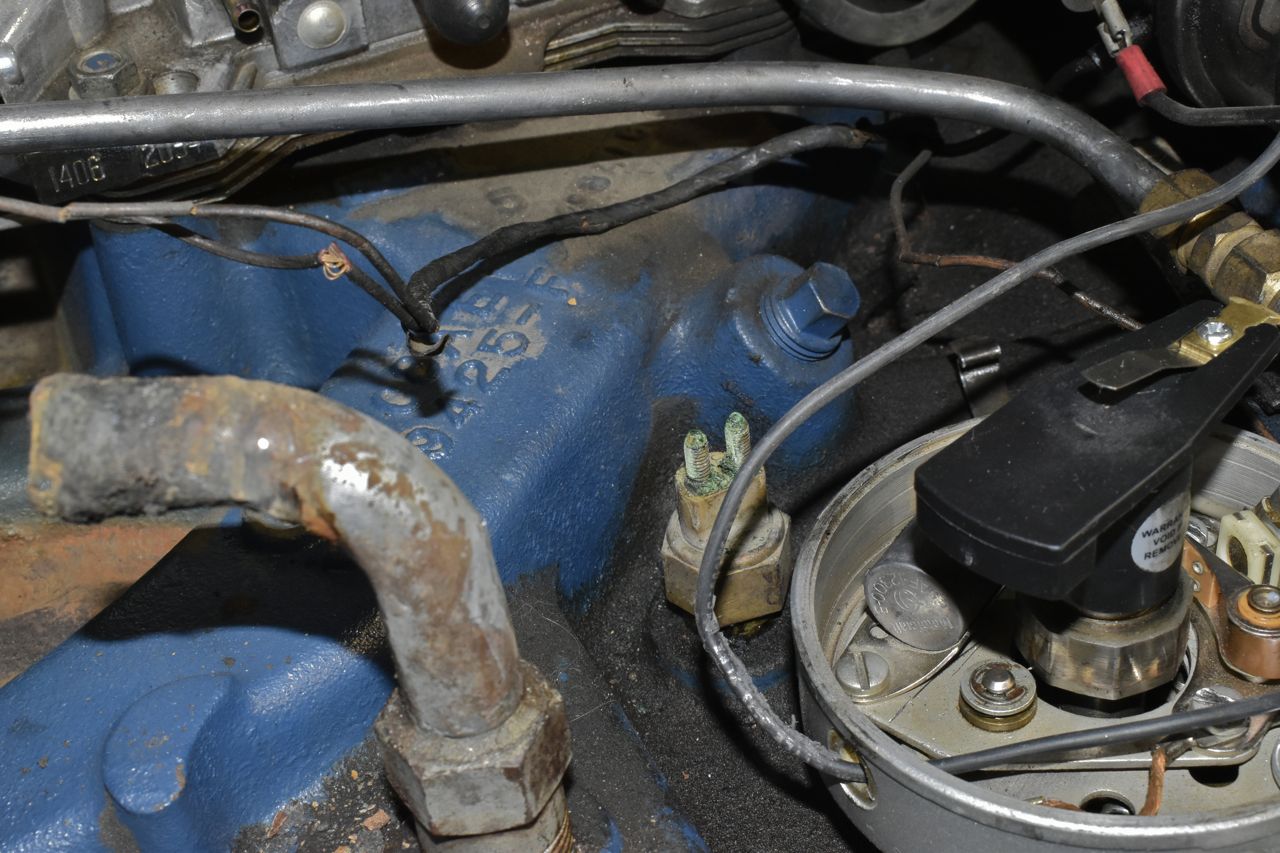
The fuel line is routed very poorly, there is a compression fitting on it and there is no fuel filter between the pump and carb. Isn't that special.

On the carb you'll notice it has an electric choke, but where o where have they connected power for it.

Found it. It goes to the 'I' terminal on the starter relay and if familiar with the wiring diagram we know this is the same as putting it on the '+' terminal on the coil and this places the electric choke after the resistance wire and at 11 ohms it draws the coil voltage from about 9 to about 5 in 'RUN' position.

The hose for the PCV valve was draped behind the engine and left there. I guess they figured road draft tube as it was clearly too much effort to connect it to the front port on the carb base.
Because it's an Edelbrock carb, they bent the crap out of the throttle bracket and the throttle clamp is barely hanging on and the electric throttle kick up for the A/C is hitting the coil. So I decided not to use this thing and go back to an Autolite 4100.

There's so much bad eye candy I didn't even catch this till the carb came off. I mean why buy one thick spacer when you can stack the deck with several thin ones.

For giggles I grabbed the crank pulley and tried to move it, I could move it eerily easy for a scary portion of rotation. I oscillated the crank back and forth and starred at the ignition rotor and the crank could spin 20+ degrees before the rotor would move.
So I removed the timing cover.
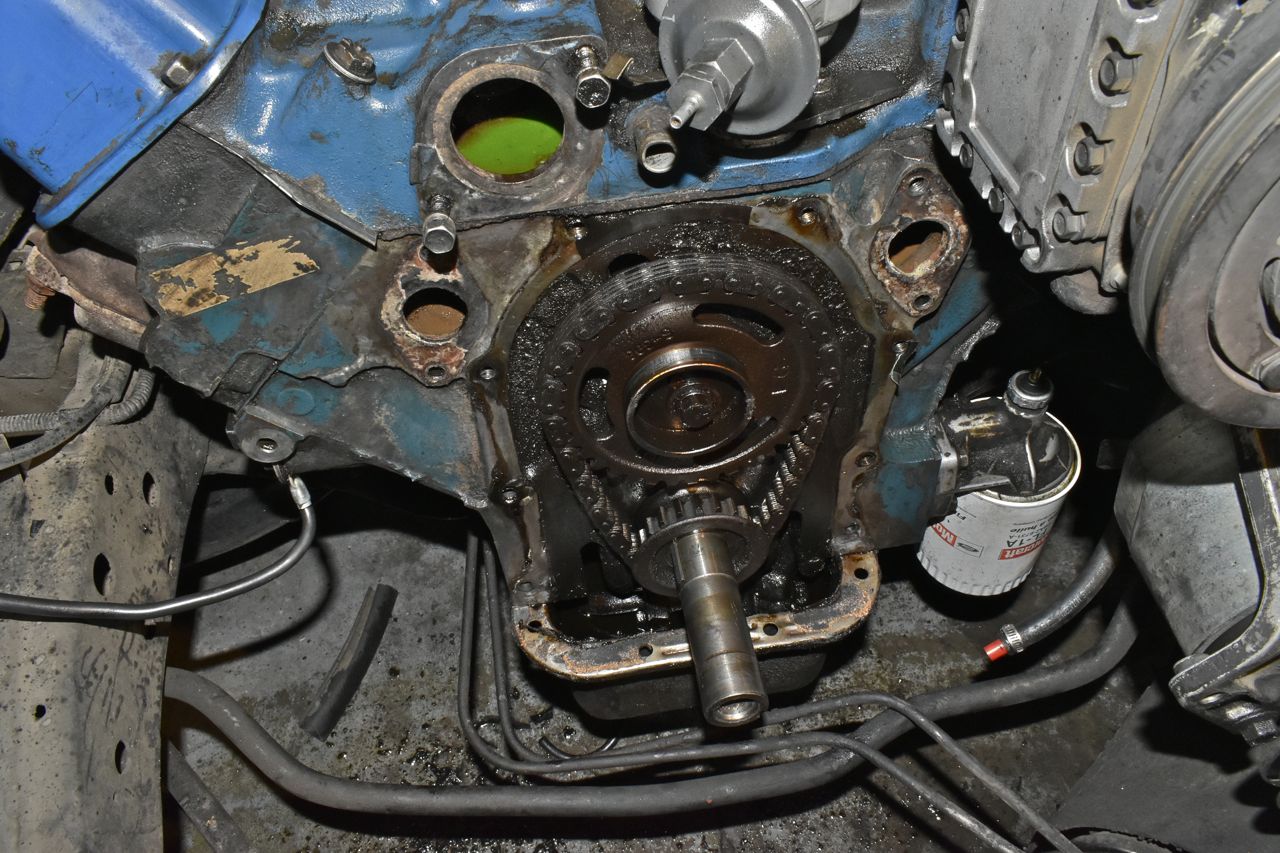
All worn out, that sums that up.

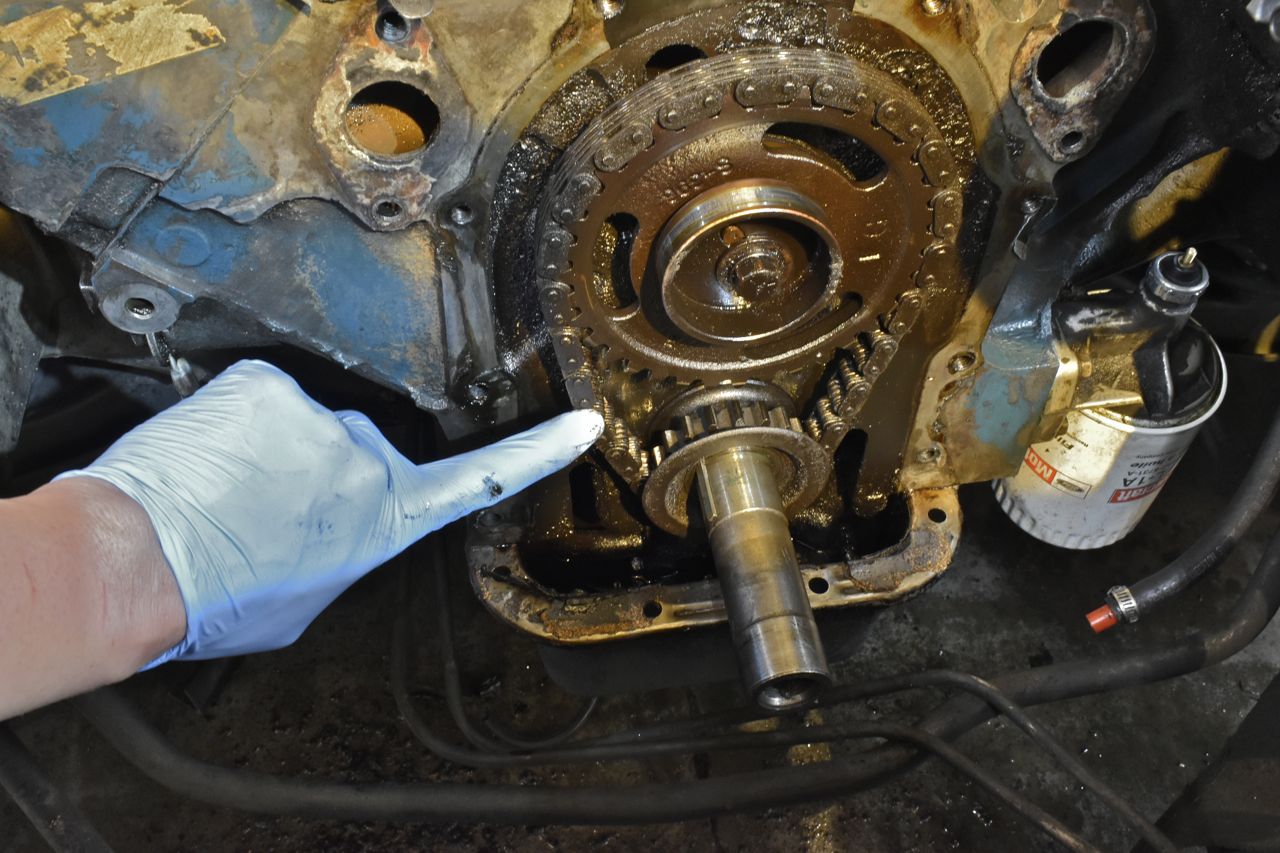
Even the ignition coil was leaking oil. It's just dripping out of it.

But it's chrome and says high performance so it must be good? Chrome does not get you home. Plus the wiring harness just falls apart when you handle it.

I knew this had a lot of miles on it, the equivalent of driving to the moon and starting it's homeward journey again, but it wore out the sleeve n seal. I've never seen this before, the black ring is worn and you can definitely feel it, the picture doesn't do it justice and the front of the engine was plastered with oil and mud as this was slinging it out.
I have to sleeve the sleeve! Well not really just a funny thought. I'm starting to think this thing drove to Mars.

What started out as quick cooling system refurbishment, turned into when do I stop taking it apart. This was my stopping point, until I happhazardly spun the A/C pulley and that bearing is bad. Then I spun the power steering pump and the pulley wobbles as it's bent like someone tried to install it with a hammer. Good grief.
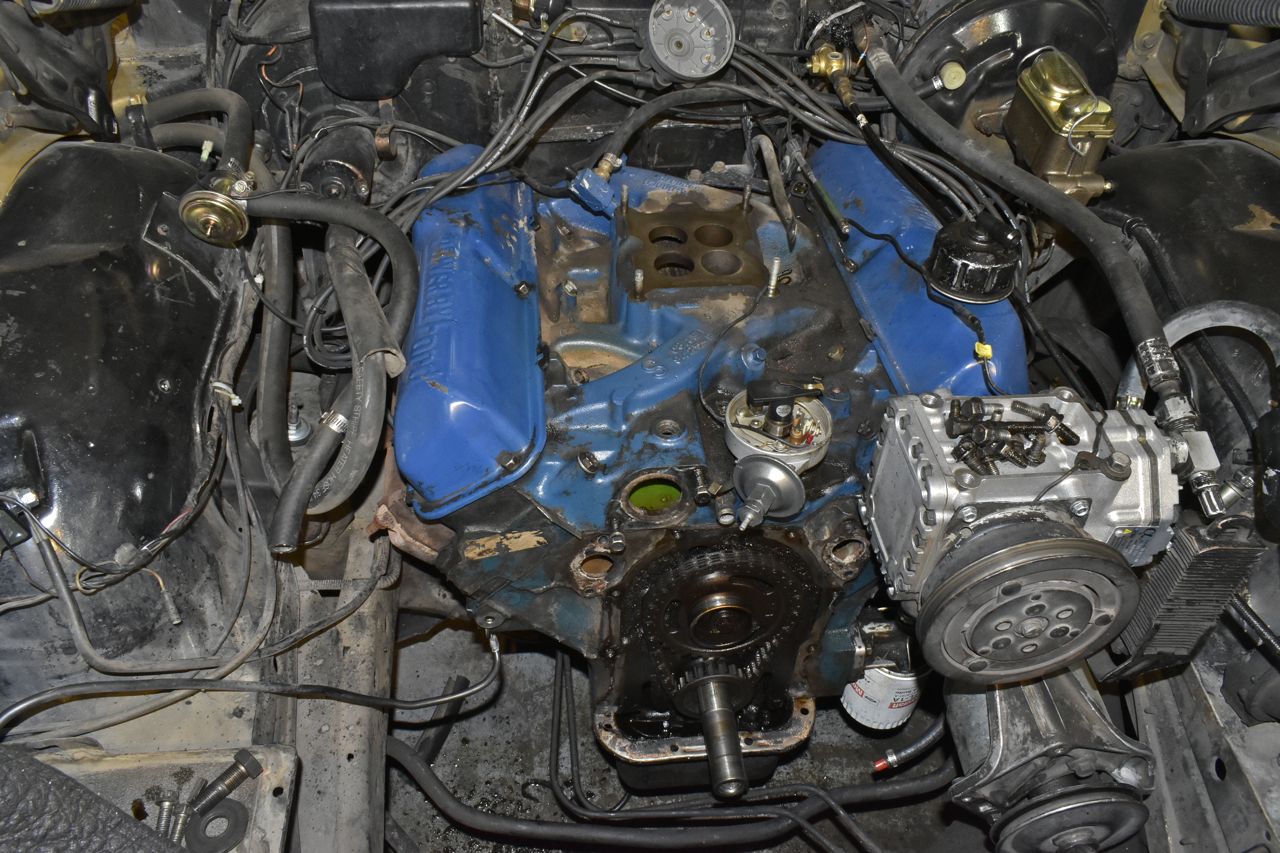
This is the disaster, err I mean wiring on the back of the alternator. So the brainiacs that worked on this removed the fusible link on the alternator and it's just a ring terminal now and that B+ line is almost rubbed through by abrading on the engine block. 1/2 mm more and that B+ feed wire would turn into a red hot toaster element without the fusible link.
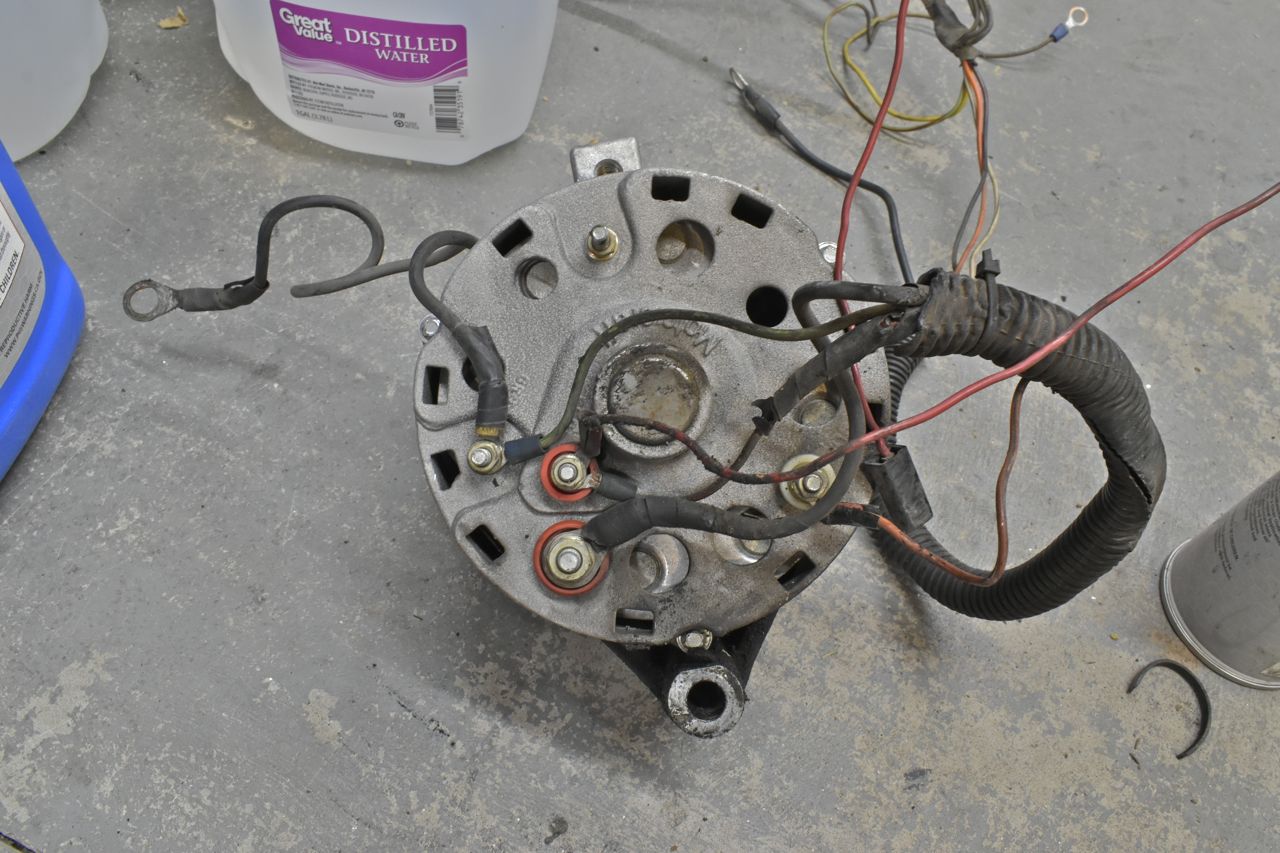
The bearings are done in this alternator, they are terrible, feels like an earthquake in your hand when you spin it. It doesn't look that old either. This engine ran extremely hot in the summer. Between the extreme retarded cam timing and the previous owner boasting about he sent the distributor to some place to have set back to 1968 emission specs (equates to abysmal mechanical advance) the dynamic compression was so low it basically was a Ben Franklin pot belly stove with a crankshaft sticking out of it.
I do find the alternator case intriguing. The rear half looks like a typical later 1G but I've never seen a 1G with a rounded front case half. The early 1G's had a rounded rear case half and a squared off front case half. Interesting.
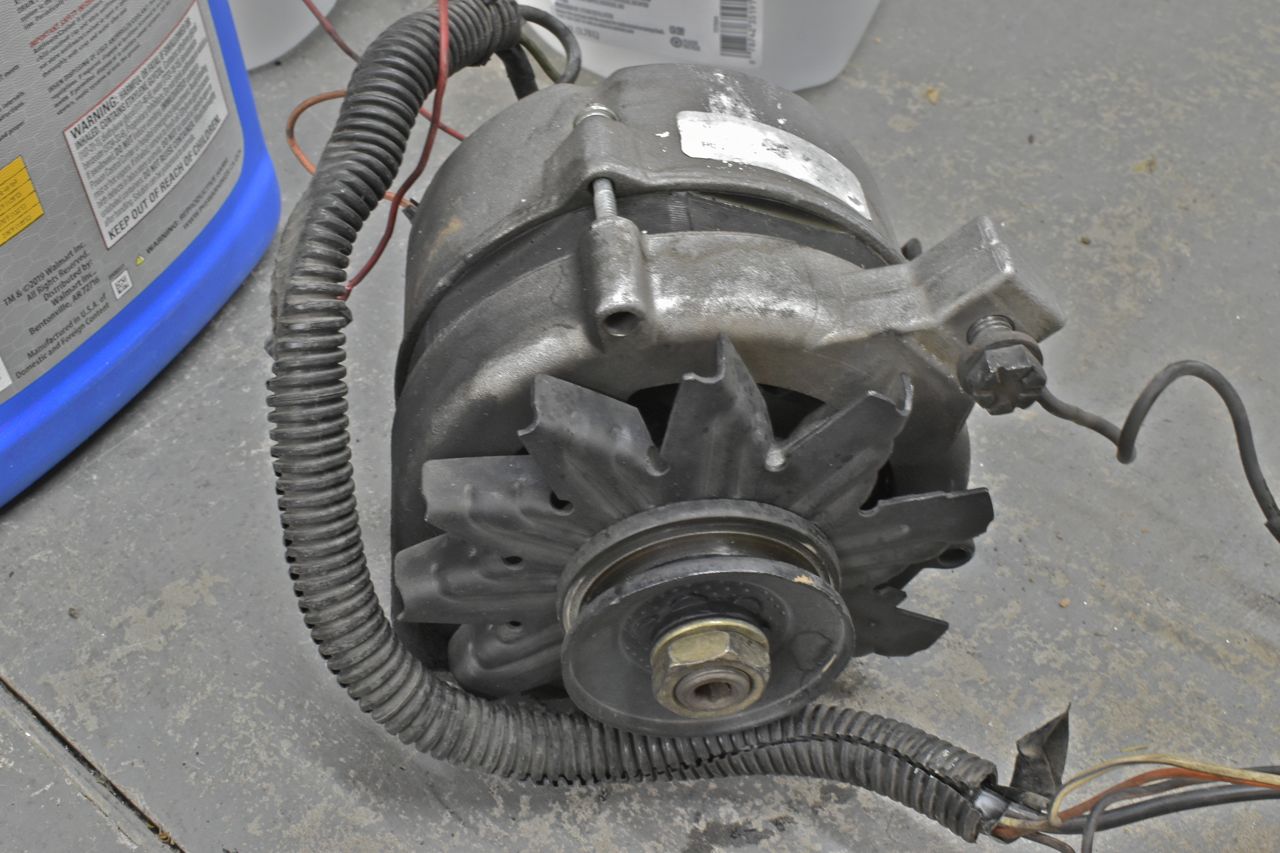
OK now I'm done, well for now. I think I can finally start to put this back together properly.
Click here to continue to part 14